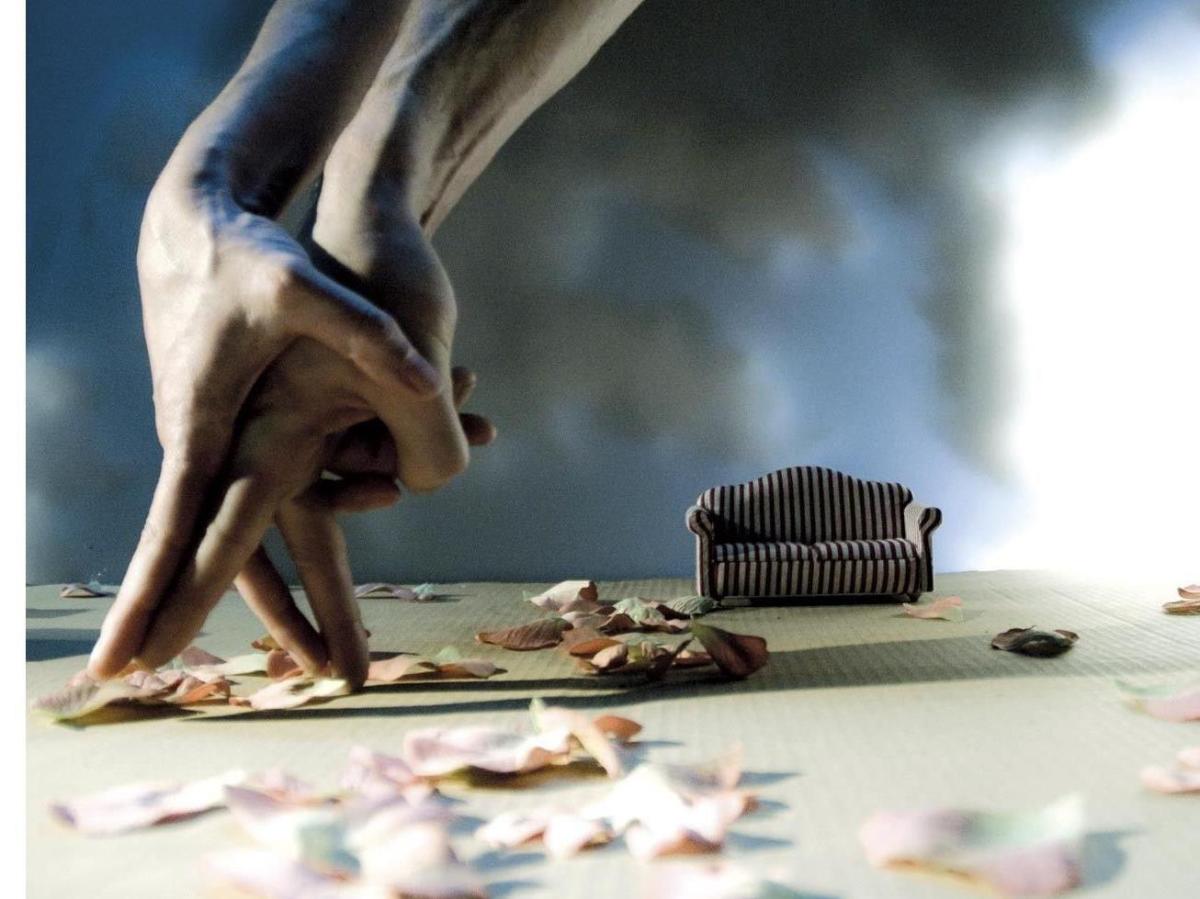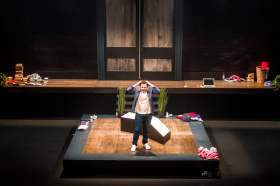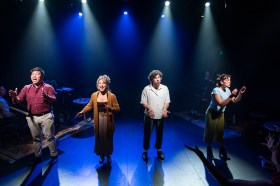Image: supplied
Dancing hands, inspired videography, minuscule details and a rich narrative voice – these form the hallmarks of Kiss & Cry, a multimedia collaboration showcased at Carriageworks as part of the Sydney Festival. Brought to Australia by Charleroi Danses, this performance plays with puppetry, video projection, dance, and intense visual detail on an epic scale. Initially conceived by Michele Anne De Mey and Jaco Van Dormael, this production premiered in 2011 in Mons, Belgium.
The narrative follows the story of an old woman looking back on her life and the relationships she’s had. Each one has vanished into the deep chasm of memory – locked away into a place untouchable. As a young girl she had fallen in love for 13 seconds with a boy who’s hands stayed in her memory. These hands formed the crux of the shows narrative – each relationship is another experience with hands – some rough, some smooth, but none of them as vibrant and alive as those of the boy’s.
To emphasise this, almost the entire production is performed by hands. Hands made to look like figure skaters, hands rocking back and forth in a boat, hands sleeping then making love in bed, hands used as animals to show the passion of a ruined love affair – there seemed no end to the creative uses fingers and hands can be put to. Where other images were used – small mini-figures placed around the set, actors dancing, a lego figure standing in a garden, a foot – they emphasised the use of hands as puppets, rather than detracting from the images created as a whole.
The performance itself was two-fold: a video created in real-time on a screen above the stage, and the artists themselves bringing the performance to life below it. Everything was visible – from the cameras wheeled about the set, to the puppeteer holding a fan to create the image of water through the clever use of fabrics. The scenes flowed through seamless transitions across multiple on-stage areas, each of which were used various times throughout the play.
As a puppeteer, I was blown away by the simple skill with which an actor’s hands were animated – then projected as a complete image alongside tiny sets of intricate detail. Again and again I had no idea how the images above the stage were being created, only to look below and see with surprise the simple effects being used to create the imagery.
There was very little that didn’t work for me. One of these were the seagulls in several scenes – their animation lacked the focus and energy so apparent throughout the rest of the show. The birds moved too fast to be believable, and became an afterthought rather than a believable image.
Another issue was the length of several scenes – they became showcases of visual imagery, rather than a means to carry the narrative. While still brilliant, sometimes this got lost in a narrative that wasn’t contributed to by the length of scenes on-stage.
The various recorded music and sound-scapes of the show were well placed and thought out, however lacked the same immediacy of the performance. For such a raw show of creative energy, I wanted to see more Foley live on stage!
All in all, these are very small criticisms for an otherwise inspired piece. I feel excited to have seen it, and have already started thinking how I can work this inspiration into my own practice. Hats off to the creative team behind Kiss & Cry, as well as the Sydney Festival and Carriageworks for hosting their season.
Kiss & Cry
Produced by Charleroi Danses
Carriageworks, Sydney Festival
22 – 25 January, 2015





